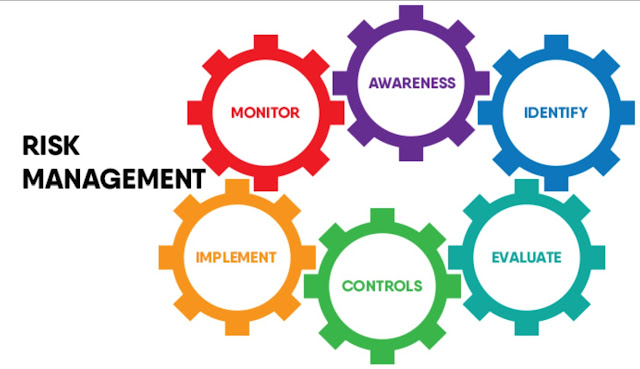Main Steps for Risk Management Process
A software
developer has to work closely with SDLC (Software Development Life Cycle).
It is a stepwise approach in building or developing a software or application.
In the process, there are phases involving risk management.
Systems engineers and network
engineers play a vital role in handling data breaches through networking or
the internet. They help in ensuring data security and managing risks occurring
in the development of a software or application. It is necessary to understand
the Risk
Management Process for a longer run in the development cycle.
There are five
steps involved in the Risk
Management Process. These are:
Identify Risk: The first step in
the risk management process is to identify potential risks in the development
process. Four risks can come. These are:
·
Financial Risk: Sometimes, due to losses or any other reason, there is an
economic crisis in the company or corporation.
·
Strategic Risk: It occurs with a passing time when new competitors are up, or
the brand reputation is at risk.
·
Operational Risk: It occurs due to turnover and
supplier failure.
·
Hazard Risk: This risk is more often physical, including fire rage or
injuries to some employees.
So, before
proceeding to tackle the risk, its identification as to which category does it
belongs to. In this phase, risk identification occurs.
Measure Risk: Since you know
the potential risk, you have to find how severe or what priority it demands.
There is a risk map or heat map by which companies measure the frequency or
severity of their risk identified. A heat map is a visualization tool that
helps to measure the severity of the risk.
A team of
professionals, including systems engineers, software developers, etc.,
plan about the expenses and time to give for a particular risk after
measuring.
Examine Solution:
There
may be multiple solutions possible for a particular risk. In this phase of the risk
management process, alternative or different solutions are
available, and professionals analyze solutions to find the optimized solution.
In most cases,
organizations or corporations can choose to accept, avoid, control, or transfer
risk.
·
Accepting A Risk: In this scenario, the company takes the risk as some risks are
natural and can benefit in the long run.
·
Avoiding A Risk: It is a situation in which a company decides not to
participate in the upcoming risk.
·
Controlling A Risk: It is a preventive step to manage the risk and diminish it.
·
Transferring A Risk: It involves putting forward the risk to someone else, likewise
in insurance purchase.
Implementation
Solution: After much analysis, the final solution implements. In this
phase, professionals gather all the necessary resources, including funding,
personnel, infrastructure requirement, and any other necessity.
Finally, the
solution implements logically and consistently under a team of professionals.
Monitor Results: This is the
final phase in the risk management process, but the most crucial one.
The process does not end here. Since the risk's discovery, the management is
undergoing. It is a never-ending process.
The organization
has to monitor the outcomes and analyze the further changes occurring in the
process or existing systems.
Bottom Line
The Risk
Management Process is a crucial phase in any organization or corporation.
It helps in maintaining flexible and versatile changes in the organization for
the welfare of employees. It also regulates risk management activities and
controls the risks in advance.
In the future perspective, it will help in
making better decisions. Also, it will help software developers and
software engineers in decision-making while developing software or
application.


Comments
Post a Comment